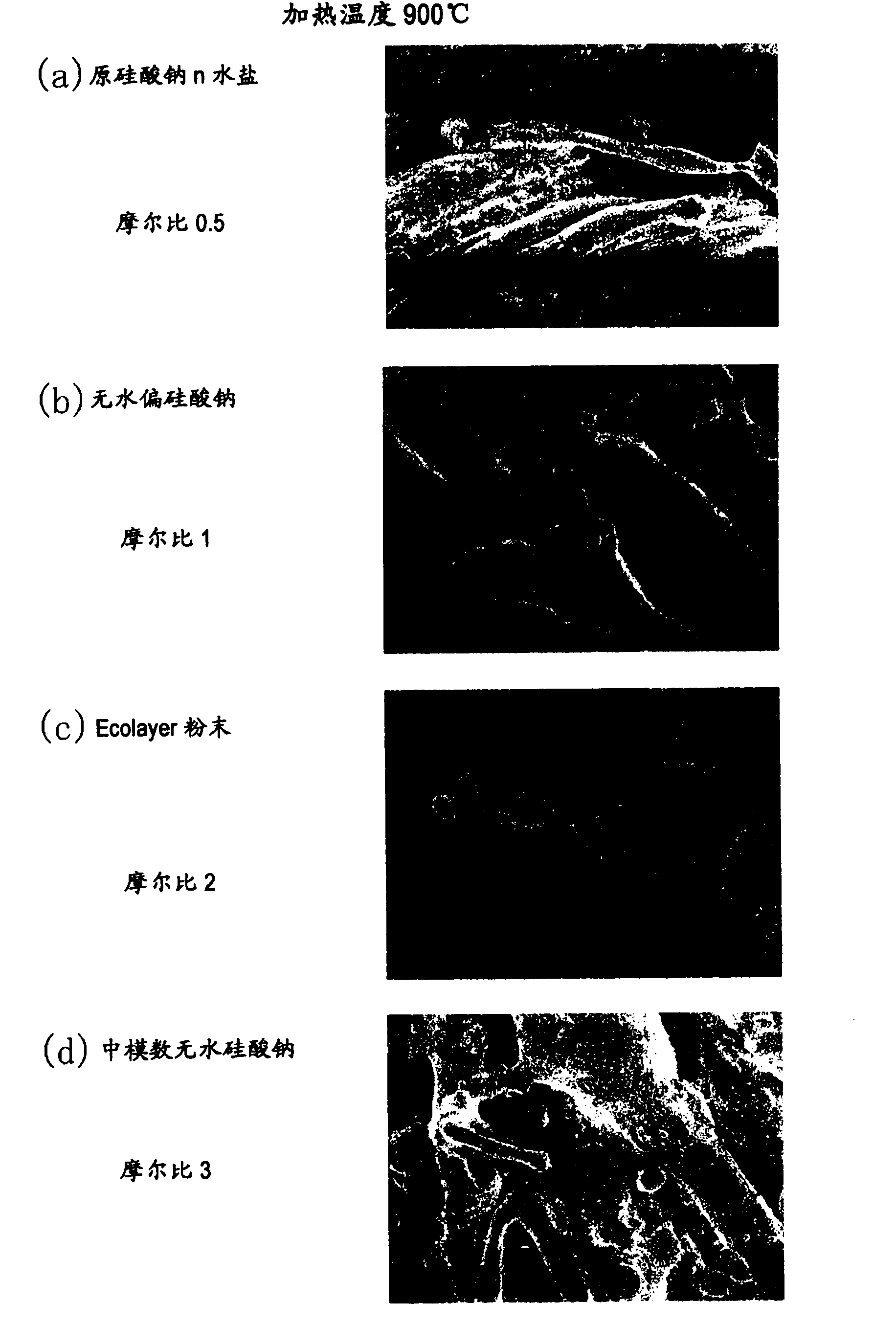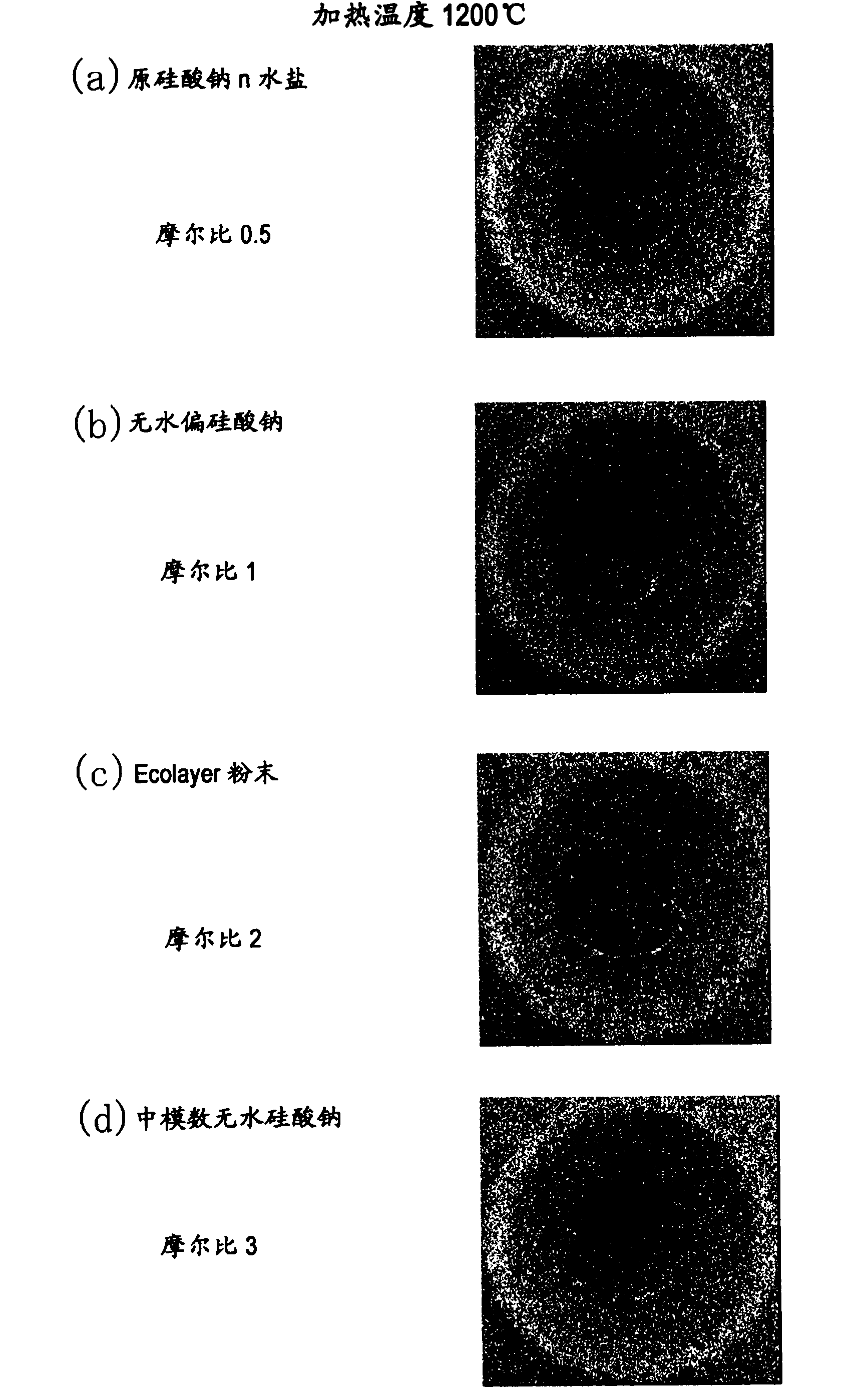Method of detoxifying asbestos-containing solid waste
A solid waste and waste technology, applied in the field of harmless treatment, can solve problems such as difficulty in securing a new final disposal site, deterioration of processing equipment, and huge size
- Summary
- Abstract
- Description
- Claims
- Application Information
AI Technical Summary
Problems solved by technology
Method used
Image
Examples
Embodiment 1
[0108] Mix 0.5g asbestos thread and 0.5g sodium orthosilicate n water salt (SiO 2 / M 2 The molar ratio of O=0.5) was loaded into a crucible with a capacity of 50 ml, and stirred for about 10 seconds using a spatula. Then, the crucible was capped and placed in an electric heating furnace (electric furnace KBF-894N manufactured by Koyo Lindbergh Co., Ltd.), and heated at 900° C. for 1 hour in the electric furnace. Then, it was allowed to cool to room temperature, and the contents were taken out for observation with a scanning electron microscope.
[0109] As a result, asbestos loses its needle-like fibrous structure ( figure 1 -(a)).
Embodiment 2
[0111] Use 0.5g of anhydrous sodium metasilicate (SiO 2 / M 2 The same operation as in Example 1 was performed except that the molar ratio of O = 1) was used as sodium silicate.
[0112] Using a scanning electron microscope to observe the contents of the crucible after heat treatment, asbestos lost its needle-like fiber structure ( figure 1 -(b)).
Embodiment 3
[0114] Use 0.5g Ecolayer powder (SiO 2 / M 2 The same operation as in Example 1 was performed except that the molar ratio of O = 2) was used as sodium silicate.
[0115] Using a scanning electron microscope to observe the contents of the crucible after heat treatment, asbestos lost its needle-like fiber structure ( figure 1 -(c)).
PUM
 Login to View More
Login to View More Abstract
Description
Claims
Application Information
 Login to View More
Login to View More - Generate Ideas
- Intellectual Property
- Life Sciences
- Materials
- Tech Scout
- Unparalleled Data Quality
- Higher Quality Content
- 60% Fewer Hallucinations
Browse by: Latest US Patents, China's latest patents, Technical Efficacy Thesaurus, Application Domain, Technology Topic, Popular Technical Reports.
© 2025 PatSnap. All rights reserved.Legal|Privacy policy|Modern Slavery Act Transparency Statement|Sitemap|About US| Contact US: help@patsnap.com



